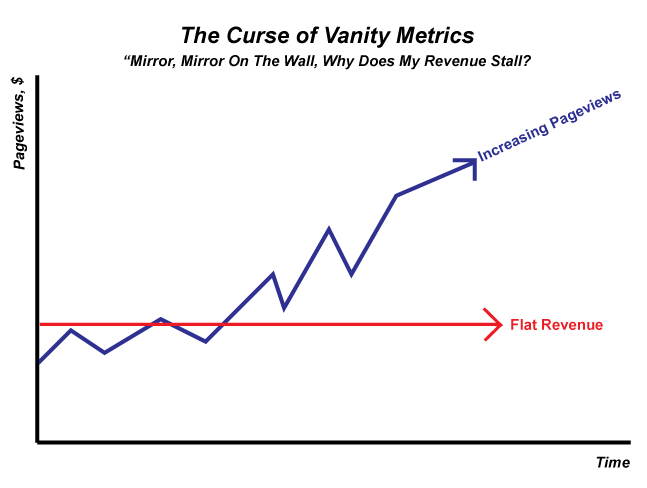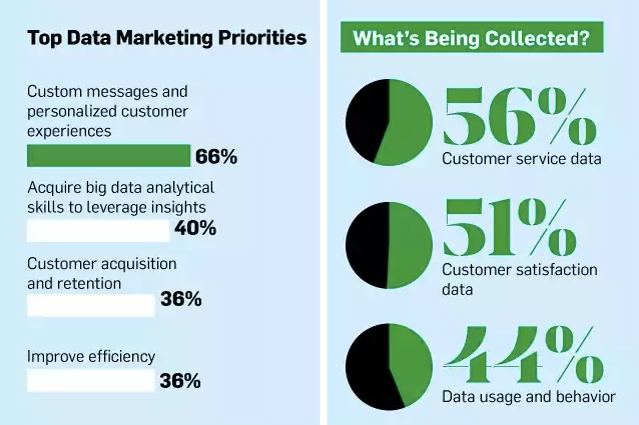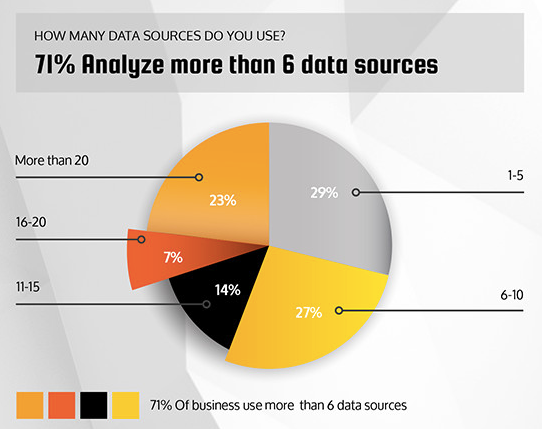
Think fast. How do you measure the success of your marketing strategies? If you need to digest this question for longer than two seconds, then there’s a high likelihood that your marketing strategy is based on non-quantifiable metrics.
Gone are the days when marketers could only rely on light data when analyzing and evaluating the performance of our successes and failures. Technology has advanced, and digital marketing is heading in the same direction.
Data-fluent marketers are more likely to succeed than those who follow their guts alone. Here’s why.
Growing Emphasis on Data-Driven Marketing
Just a few years ago, data-driven marketing was considered to be just a novel story, possibly something that would never come to fruition. Today, the industry’s attitude has greatly evolved. Analytics have become an integral part of all marketing decision making, from media buys to messaging emphases to overall strategies. And marketers appreciate the need for data-driven marketing strategies, unlike in the past.
Some 69% of marketers intend to increase their budgets for data-driven marketing in the year ahead, according to a report from the Global Alliance of Data Driven Marketing Associations. What’s more, 77% of digital marketers have total confidence in the data-driven approach. Approximately 49% of marketers believe that data-driven marketing maximizes effectiveness as far as strategy implementation is concerned. And a further 20% hold the opinion that data-driven marketing is integral in creating an alignment with consumer preferences.

Data-driven marketing strategies demand that practitioners develop comprehensive, definitive, end-to-end knowledge when it comes to their companies’ operations and audience engagement. Today’s marketers, in turn, are emphasizing heavy data in order to make sure their marketing efforts bear maximum fruit at minimum cost.
The Importance of Measuring the Most Relevant Data
It’s all too easy to focus on the wrong metrics. Sometimes what seems to you to be an indication of brand or business health turns out to be totally irrelevant.
As a hypothetical example, let’s say you notice that traffic on your new Chinese-language site has dropped in the beginning of February. You start to suspect that your search ads haven’t been performing as well as expected and attribute the problem to another search engine algorithm change.
Just as you are about to pull the plug on your ad campaigns, you realize that the reason for the traffic drop was that the Chinese New Year took place in the first two weeks of February and few of your anticipated visitors were active on the web for much of that time. You keep your ad campaigns in place and, soon enough, your site traffic returns to your expected levels as the celebrations wind down.

Sometimes “vanity metrics” like social media follower counts, email list size and article page views can be likewise misleading. While KPIs like these can impress executives who are over-fixated on being “impressive” on a surface level, they rarely correlate with any type of genuine business success.
In this sense, a far more reliable metric of your campaign’s success may be average session duration or pages per session instead. Unlike site traffic, this type of content engagement data is likely to be a far more effective predictor of lead conversions.
On the other hand, when you focus too much on your “website analytics,” at the expense of your broader analytics data, you are unnecessarily limiting your understanding of your marketing performance. Website analytics allow you to measure only some aspects of your site’s performance, so they’re inherently limited.
Keeping these silos up likewise cripples your efforts to accurately measure your effectiveness and identify the key metrics to focus on and optimize in order to ensure sustained success.
The trouble is, you might not always know when you’re fixating on an analytics “red herring.” It is important to constantly ask yourself whether your marketing measurement efforts reflect the reality on the ground, or if you are simply lying to yourself.
Website Analytics Are Too Limited
Remember that the primary aim here is to grow revenue concurrently with your audience size and engagement levels. When you dig deeper and unearth relevant metrics such as conversions, retention rates, and customer lifetime value, rather than dwelling on vanity, your revenue will increase, and you’ll see which marketing channels and activities are actually driving the best performance.
You can only make this type of analysis possible when you get to understand the trends and patterns at play in every phase of your business, which requires complex analytics. Complexity, in this case, means digging deeper into your metrics, rather than concentrating on light data. Complex metrics include data sets from multiple sources, which may or may not adhere to standardized data structures.
Working with complex analytics, in turn, hinges on having access to the right tools. A new generation of data analytics platforms enable you to collate data from multiple sources and juxtapose them with each other via blended dashboard views comprised of previously unrelated metrics (hence the term “blended view”).

With your data silos gone, you’ll have everything you need in place to start working with custom KPI formulas and identifying your “One Metric That Matters” (OMTM). This may literally be a single metric, or it may be a small subset of metrics that collectively reveal performance based on specific KPIs.
Knowing your OMTM helps considerably with focusing your team on the activities that are most likely to drive meaningful contribution to your success. There are various ways to find your OMTM, but few of them are effective in the absence of a blended view of your data. You can only see the big picture when social media, CRM utilities, marketing automation, website analytics, and other data sources are employed collectively.
Thankfully, though, you have growing numbers of data sources that you can take advantage of to gain deeper insights. Recent research by Aberdeen on behalf of business intelligence platform Sisense has found that contemporary companies regularly depend on data from a growing pool of complex sources.

Next-generation marketing analytics need to go deeper to unearth the key actions taken by prospects on their journeys towards conversion, but this is only possible if the complexity of your data doesn’t overwhelm you. This is the value that’s unlocked by using today’s most advanced analytics platforms like Datapine, Birst and Databox.
The Only Useful Data Is Actionable
There are numerous benefits associated with minimizing your data silos so you can use today’s more advanced analysis tools. They enable marketers to create powerful, blended views of complex data, to analyze the data with minimal latency and to deliver actionable insights. The result is the ability to make quicker, better-informed decisions and more effective teams.
Look beyond simple web analytics. Digital marketing analytics are your key to sustainable growth and continued success. There’s a big difference between metrics and insights.
Assuming you’re set up with the right measurement infrastructure, it is easy to check the number of visits that a certain influencer campaign, for example, referred your site. But how engaged is that traffic? How many of those visitors eventually placed purchase orders? For how much money? Did they come back for more?
How do these performance parameters compare with the other influencer campaigns you’ve run in recent months? How does their ROI compare with your other marketing activities? What should you do differently next quarter?
These types of insights are extremely powerful, because they’re actionable. By looking at the metrics that matter and putting them all together to show a complete picture, you’re able to maximize marketing impact and efficiency.
Wrapping Up
The bottom line here is that relying on simplistic website analytics is not going to drive your success. Only complex data analytics that draw on your broader access to data can give you a clearer, holistic perspective on your campaign’s effectiveness and help you identify that One Metric That Matters.
Armed with that knowledge, you will be far better equipped to tackle the challenges of the dynamic marketplace in which you operate, and you’ll be in great position to develop a truly effective next-generation marketing strategy.
For a good introduction to using analytics to improve your products and results, check out our book, Researching UX: Analytics.
 Charles Costa
Charles CostaCharles Costa is a content strategist and product marketer based out of Silicon Valley. Feel free to learn more at CharlesCosta.net.




